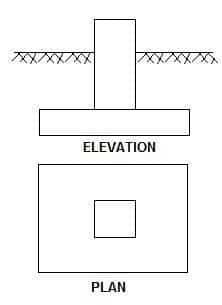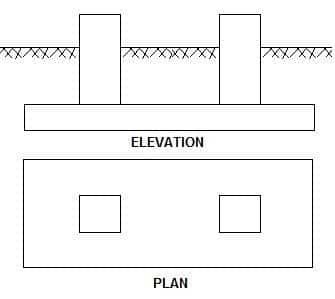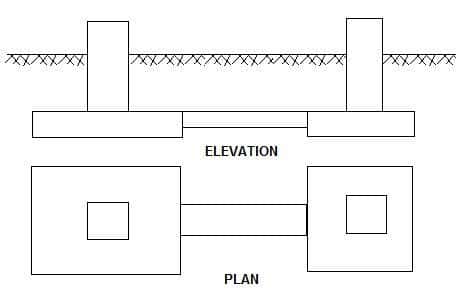Types of Shallow Foundations and their Uses
Shallow foundations are constructed where soil layer at shallow depth (upto 1.5m) is able to support the structural loads. The depth of shallow foundations are generally less than its width.
Table of Contents
Different Types of Shallow Foundations
The different types of shallow foundation are:
- Strip footing
- Spread or isolated footing
- Combined footing Strap or cantilever footing
- Mat or raft Foundation
1. Strip Footing
A strip footing is provided for a load-bearing wall. A strip footing is also provided for a row of columns which are so closely spaced that their spread footings overlap or nearly touch each other. In such a case, it is more economical to provide a strip footing than to provide a number of spread footings in one line. A strip footing is also known as continuous footing.

2. Spread or Isolated Footing or Individual Footing
A spread footing also called as isolated footing, pad footing and individual footing is provided to support an individual column. A spread footing is circular, square or rectangular slab of uniform thickness. Sometimes, it is stepped or haunched to spread the load over a large area.

3. Combined Footing
A combined footing supports two columns. It is used when the two columns are so close to each other that their individual footings would overlap. A combined footing is also provided when the property line is so close to one column that a spread footing would be eccentrically loaded when kept entirely within the property line. By combining it with that of an interior column, the load is evenly distributed. A combined footing may be rectangular or trapezoidal in plan.

4. Strap or Cantilever Footing
A strap (or cantilever) footing consists of two isolated footings connected with a structural strap or a lever. The strap connects the two footings such that they behave as one unit. The strap is designed as a rigid beam. The individual footings are so designed that their combined line of action passes through the resultant of the total load. a strap footing is more economical than a combined footing when the allowable soil pressure is relatively high and the distance between the columns is large.

5. Mat or Raft Foundations
A mat or raft foundation is a large slab supporting a number of columns and walls under the entire structure or a large part of the structure. A mat is required when the allowable soil pressure is low or where the columns and walls are so close that individual footings would overlap or nearly touch each other.
Mat foundations are useful in reducing the differential settlements on non-homogeneous soils or where there is a large variation in the loads on individual columns.
No comments:
Post a Comment